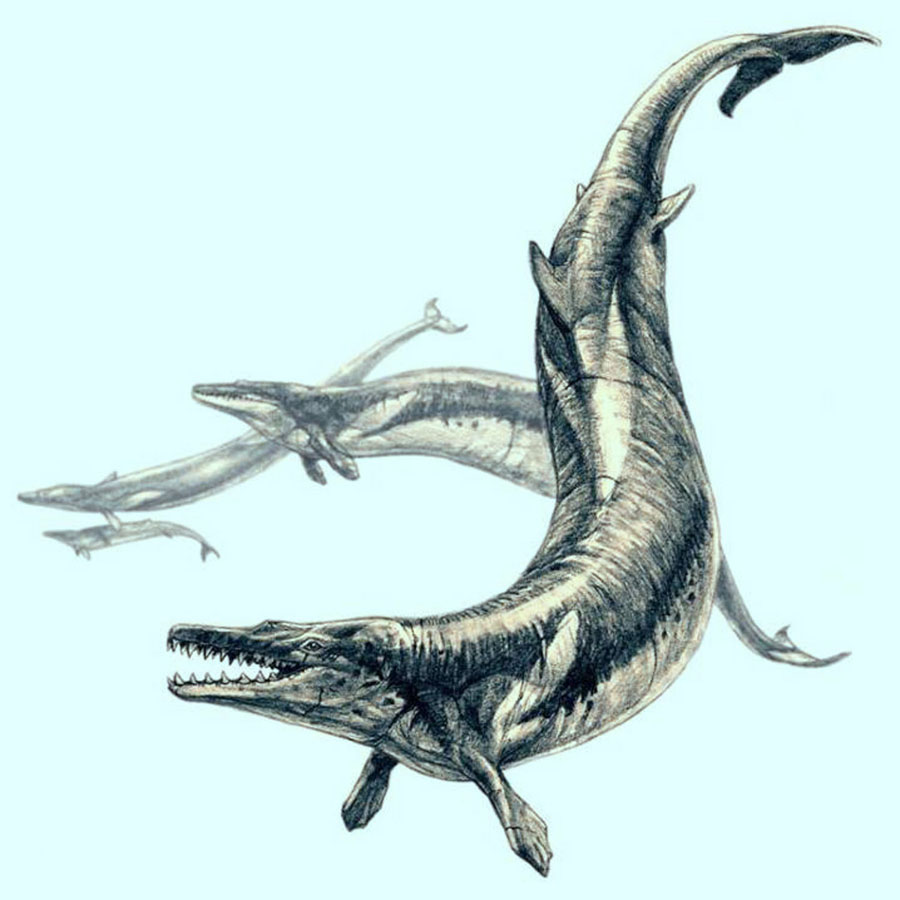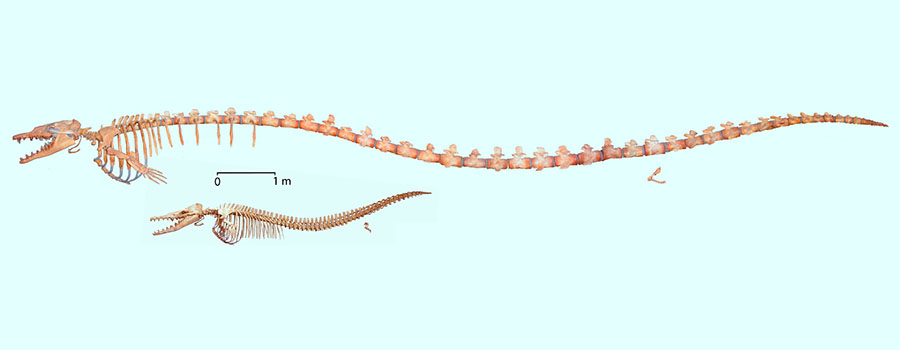Huge Archaic Whale Was Top Predator in Eocene Oceans

The stomach contents preserved in an adult specimen of the archaic whaleBasilosaurus isis from the site of the Wadi Al Hitan in Egypt suggest it was an apex (top) predator that fed on smaller whales (juvenile Dorudon atrox) and large fishes (Pycnodus mokattamensis), according to new research, published in the journal PLoS ONE.
Apex predators live at the top of an ecological pyramid, preying on animals in the pyramid below and normally immune from predation themselves.
They are often, but not always, the largest animals of their kind.
The living killer whale (Orcinus orca), about 20 to 26 feet (6-8 m) in length, is an apex predator in modern world oceans.
They feed on a variety of invertebrate and vertebrate animals including squids, sharks, bony fishes, turtles, seabirds, and other marine mammals.
Basilosaurus isis, an archaic whale that lived about 38-34 million years ago (late Eocene Epoch), had a broad marine distribution at a time when few modern whales existed.

In a new study, Dr. Manja Voss of the Museum für Naturkunde Berlin in Germany and co-authors examined the 50-foot (15 m) long specimen of Basilosaurus isis from the Wadi Al Hitan (‘Valley of Whales’) site in Cairo, Egypt.
This site was once a shallow sea during the Eocene and is remarkable for its wealth of marine fossils.
While excavating the specimen, the paleontologists also found the remains of sharks, large bony fish, and, most numerously, bones from Dorudon atrox, a smaller species of ancient whale.
The skeleton of Basilosaurus isis was distinct from other skeletons in the cluster, containing pointed the specimen’s incisors and sharp cheek teeth as well as bones.
Most of the fish, and the remains of Dorudon atrox showed signs of breakage and bite marks, were fragmented, and tended to be clustered within the body cavity of the Basilosaurus isis specimen.
“One hypothesis to explain the clustering of these remains was that Dorudon atrox had scavenged the Basilosaurus isis carcass and fish,” the researchers said.
“However, the Dorudon atrox specimens were juveniles, capable only of drinking mother’s milk.”
Bite marks on prey skulls also indicated predation rather than scavenging, since predators commonly target the head.
“Basilosaurus isis was a top predator which ate its prey live, rather than by scavenging,” they said.
“The remains of fish and juvenile Dorudon atrox in the cluster are remnants of previous Basilosaurus isis meals, while the teeth of sharks indicate postmortem scavenging.”
“The Wadi Al Hitan site was a whale calving site for prey whale Dorudon atrox, making it a hunting site for top predator Basilosaurus isis during the late Eocene.”
_____
M. Voss et al. 2019. Stomach contents of the archaeocete Basilosaurus isis: Apex predator in oceans of the late Eocene. PLoS ONE 14 (1): e0209021; doi: 10.1371/journal.pone.0209021
Source: www.sci-news.com








